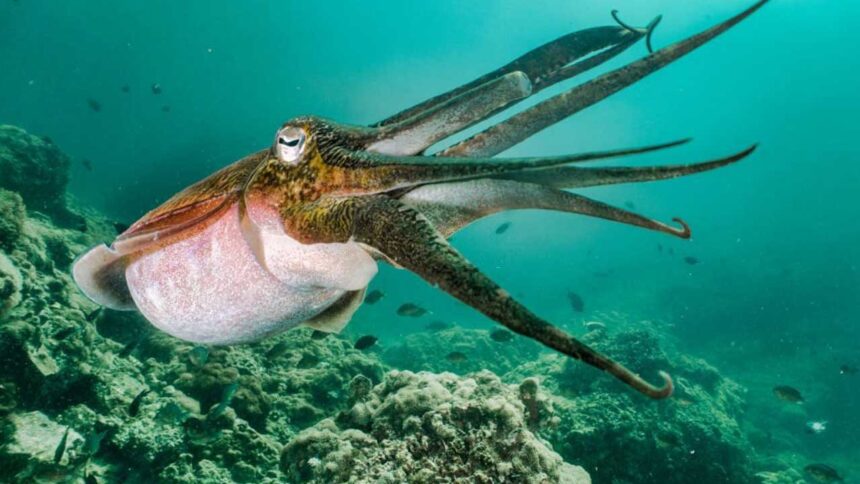Description and characteristics of cuttlefish (Sepia officinalis)
The cuttlefish (Sepia Officinalis), also called cuttlefish, cuttlefish, or cuttlefish, is a cephalopod with an oval body, quite wide and slightly flat, covered by an extension of the mantle in the form of a fin from behind the head.
It has an internal shell that frequently appears washed up on beaches and is commonly known as a cuttlebone or cuttlefish bone (see photo below). The usual coloration is mottled brown, but it can blend in with the environment by changing color.
It has ten arms, of which 8 have four rows of suction cups, and two are retractable and only have suction cups in the final expansion. The latter usually remain hidden and at rest. It can reach up to 40 centimeters in length and about 2 kg in weight.
Cuttlefish biology
During the day, the Sepia officinalis remains half buried in the bottom and goes hunting at night. When cuttlefish feel threatened, they expel a cloud of black ink that disorients their predators and allows them to flee.
Cuttlefish reproduction
The heat occurs towards spring (January – April in warmer waters and April – July in the Mediterranean). The males court the females and protect them from other rival males. These present a brighter coloration compared to the duller of those. With his hectocotylus (temporarily modified arm for sperm transmission), the male introduces the spermatophore (capsule that contains sperm) into the female’s pallial cavity.
She is deposited in coastal waters and fixed on the plants some eggs in the shape of small and pointed lemons that are darkened by her ink. After a period that ranges from 30 to 90 days, depending on the water temperature, the small cuttlefish are born already formed and do not go through the larval stage.
What do cuttlefish eat?
The hornbeam feeds on bivalves, crustaceans, fish, and even other cuttlefish when food is scarce, approaching them slowly and then launching its two retractable club-tipped tentacles with suction cups, catching them and carrying them away. Mouth. It surrounds them with its tentacles and, with its jaws, produces wounds through which saliva penetrates with a paralyzing effect.
Choco’s relationship with a man
The cuttlefish is a mollusk appreciated in the kitchen and highly valued commercially. It is intensively fished in many places and is also raised in aquaculture.
Habitat and distribution of Sepia officinalis
Cuttlefish live on sandy and muddy substrates where they can bury themselves in seagrass meadows. It tolerates brackish water. It can be found from the shallow sublittoral to about 200 meters deep. Towards spring and summer, it usually approaches the coast, while in autumn and winter, they remain deeper.
We find cuttlefish from Norway to the Canary Islands on the European Atlantic coasts. Its distribution descends along the African Atlantic coasts to Angola, but from Mauritania, much further north, it becomes very scarce. It is also frequent and widely fished on the shores of the Mediterranean Sea, where it is lower to the west.
Cuttlefish taxonomic classification
Kingdom: Animal; Phylum: Mollusks (Mollusca); Class: Cephalopoda; order: Sepiida; family: Sepiidae: genus: Sepia; species: officinalis.
Scientific name : Sepia officinalis
Common names: cuttlefish, cuttlefish, choco, cuttlefish
What is cuttlefish called in other languages?
English : common cuttlefish, european common cuttlefish; French : seiche commune; German : gewöhnliche tintenfisch; Italian : seppia comune.








